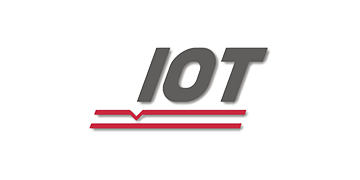| Theme | Tool- and Mold-Making, Forming technology, Process monitoring |
|---|---|
| Project title | Warm forging of steel with carbon-based coating systems (Halbwarm DLC2) |
| Project duration | 01.08.2017 – 30.09.2020 |
| Download | |
| Press release |
Warm forged parts show significantly better surface and geometric qualities compared to hot forged parts. The drawbacks, however, are higher mechanical stress and increased die wear of the forging tool. Anti-adhesive and extreme hard (up to 3.500 HV) Diamond-Like-Carbon layers (DLC) can be used as protective layers to reduce die wear. Within the first research period, the influence of DLC layers at different forging temperatures on die wear was investigated. It could be shown that DLC layers are capable of reducing die wear, but are also sensitive to high temperatures.
During the second research period DLC layers will be analysed experimentally under various conditions. DLC-multi-layer will be tested at a range of forging temperatures. To measure the local temperature on the die surface, thin layer sensors will be developed in cooperation with the Institute for Surface Technology at TU Braunschweig. Results of local die wear and temperature will be put into relation. Furthermore, experiments with different concentrations of lubrication will be carried out. Based on all the gained information a tribological wear model will be developed.
Publications about the project
In the automotive and mechanical engineering industries, forged parts are used in many applications. The dies for the forged parts are subject to high wear during forging due to high forming forces and temperatures. In order to enable economical production operation, methods to reduce the wear in warm forging have been investigated. One promising method is the use of Diamondlike-Carbon (DLC) wear-resistant coatings.
Warm Forging, Coating, DLC, Wear
Warm forged components have better surface properties and higher dimensional accuracy than hot forged components. Diamond-like-carbon (DLC) coatings can be used as wear protection coatings, which are anti-adhesive and extremely hard (up to 3500 HV), to increase tool service life. In the first funding period of the research project at the IPH – Institut für Integrierte Produktion Hannover gGmbH and the Institute for Surface Technology (IOT) of the Technical University of Braunschweig in cooperation with the Fraunhofer Institute for Surface Engineering and Thin Films (IST), the influence of different coating types and process temperatures on tool wear was investigated. The result is, that DLC coatings can reduce tool wear in some cases significantly, but that their service life is strongly dependent on the temperature. Coating-integrated temperature measurement could not be realised at that point, due to adhesion challenges. During the second funding period, the effect of multilayer DLC coatings on tool wear was investigated. Also, an additional method of the temperature measurement on the engraving surface using thin film sensors was developed in order to correlate the local process temperature and local layer wear. In this work, the development of and the results gathered by the thin film temperature sensors are presented, which enable for more accurate temperature measurements than commonly used thermocouples. Their functionality and durability under high loads were investigated and showed to be promising.
DLC2, warm forging, forging, wear, forming
Bulk-formed components are used in many applications in automotive and plant engineering. The conditions under which the components are manufactured, often at more than 800°C and thousands of tons of forming force, lead to high die wear. One way to reduce wear is to use suitable protective coatings. Initial basic investigations showed that the use of hard Diamond-like Carbon (DLC) wear-resistant coatings can significantly reduce the tribological effects on the die surface. With new methods such as the use of multilayer layer coatings and temperature measurement on the die surface by use of thin layer sensors, the potential of wear protection for semi-hot massive forming is to be investigated and expanded.
DLC, hot forging, wear





